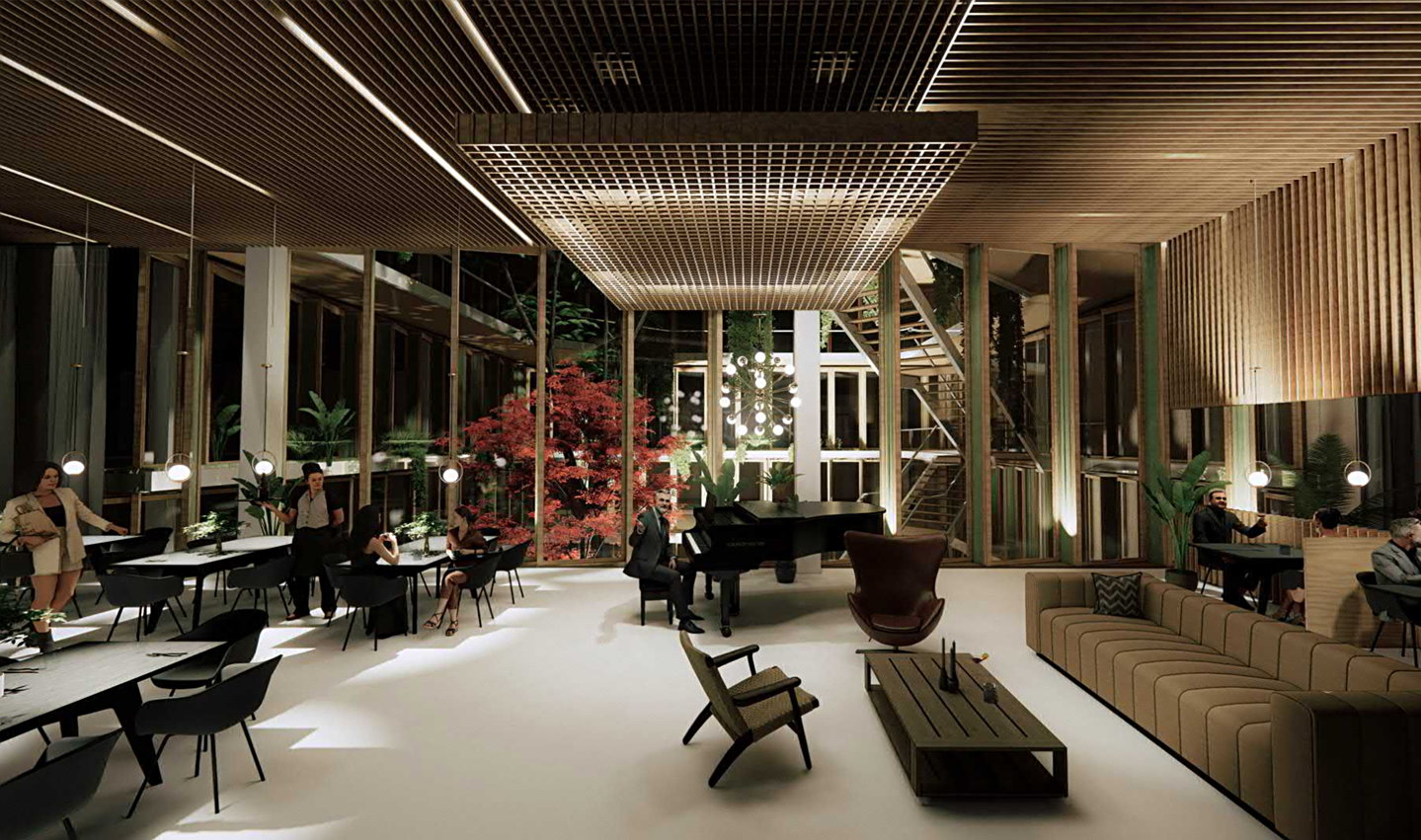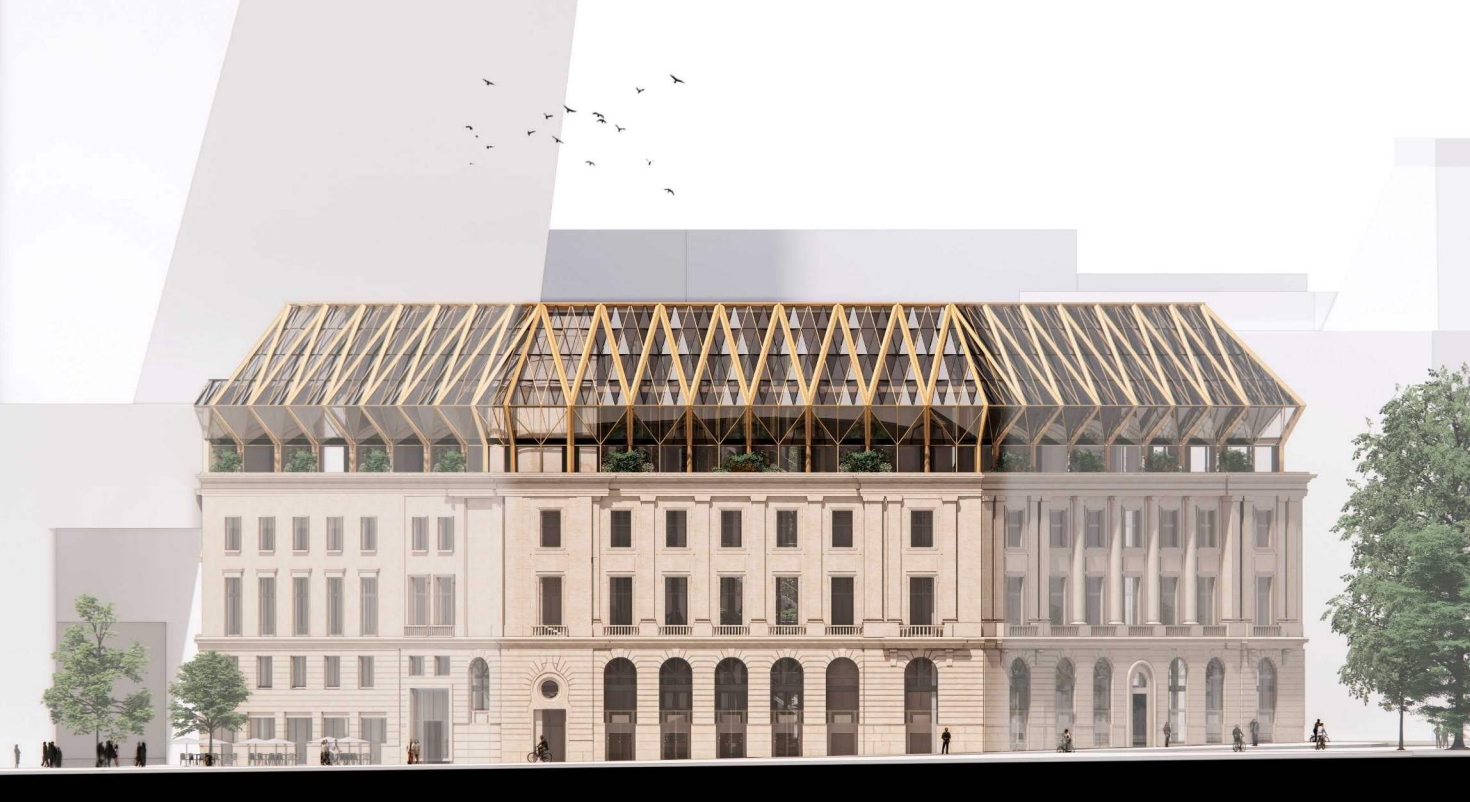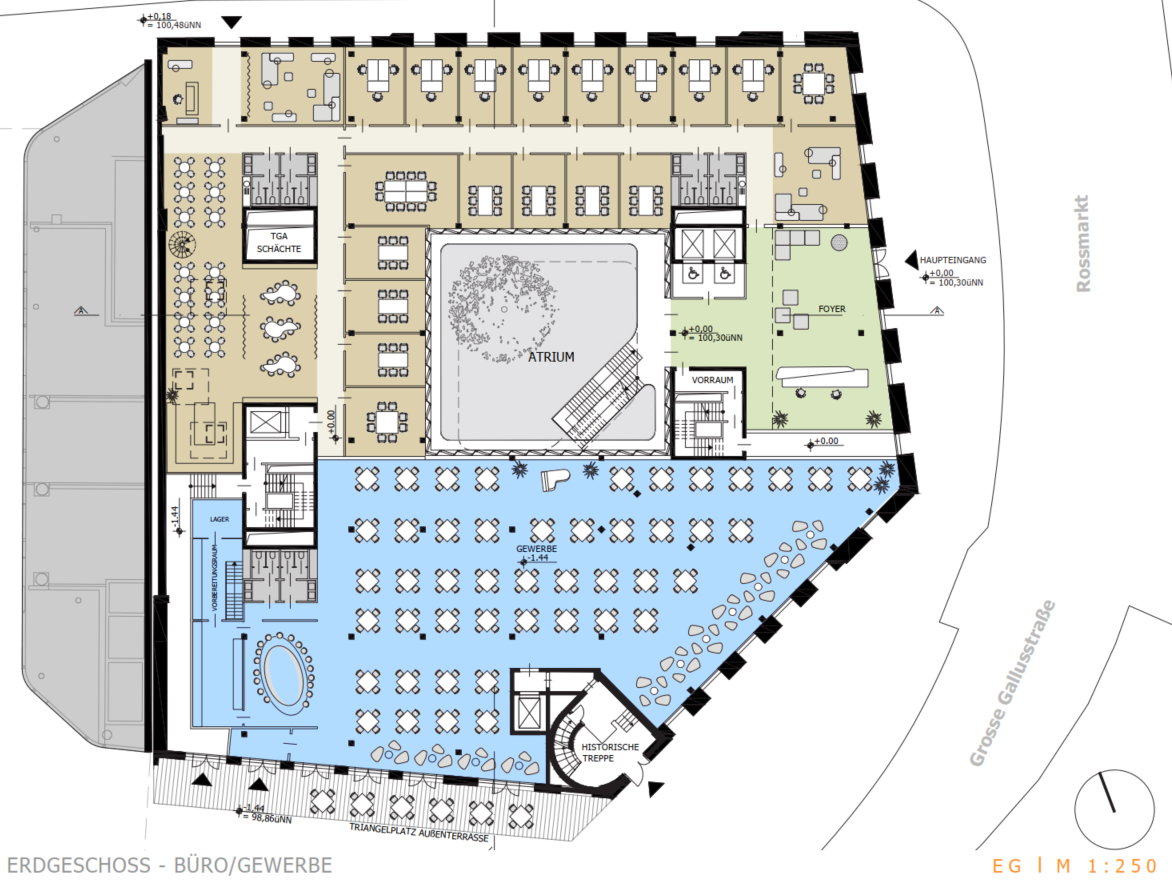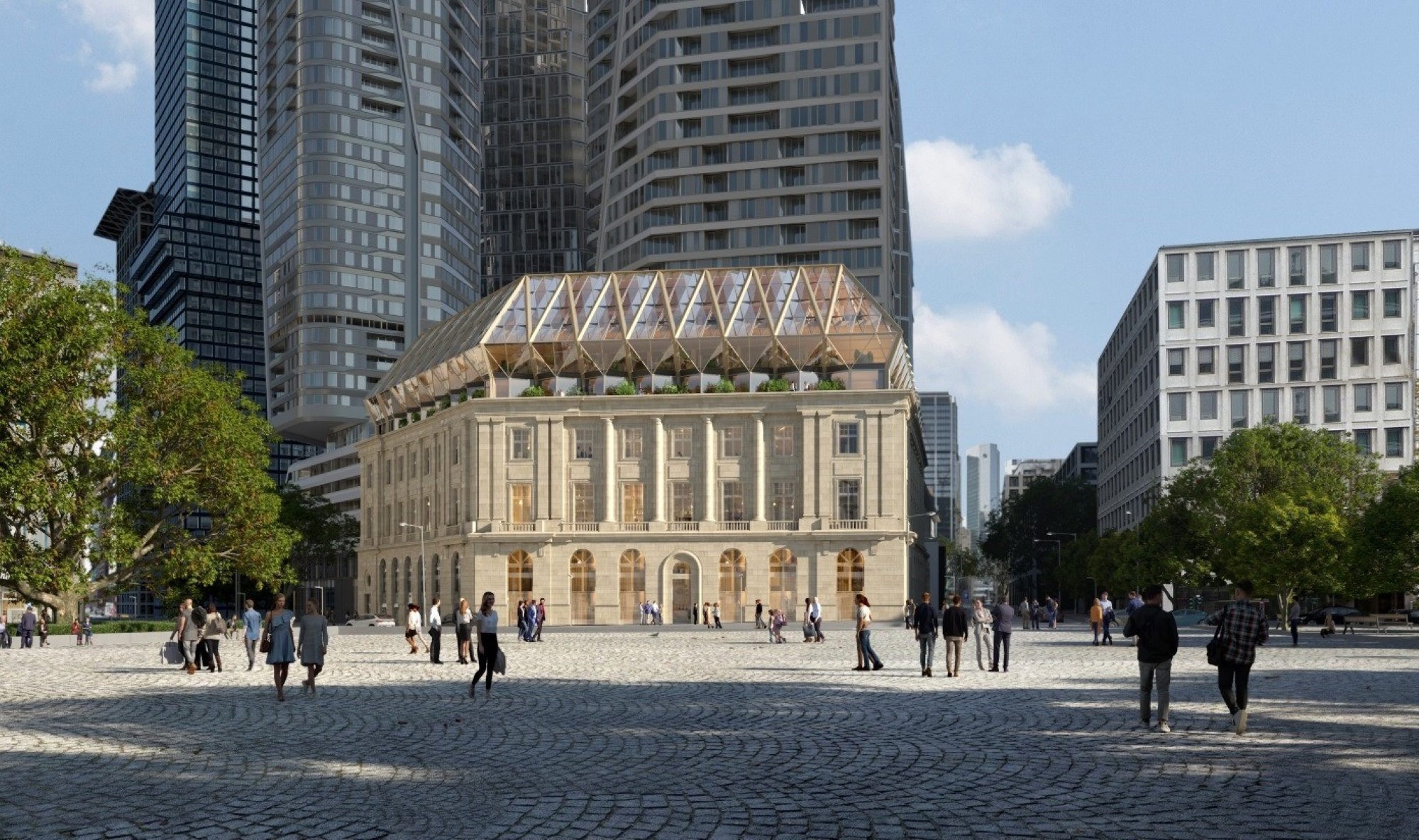
Palais on Rossmarkt
A historic building gets a new lease of life
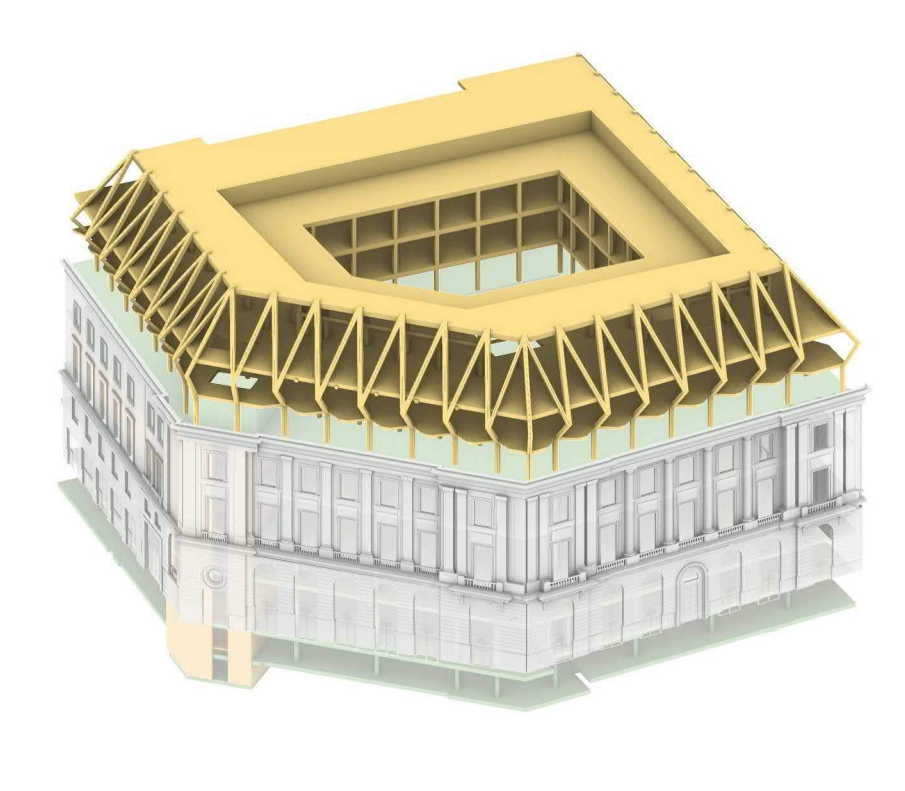
The building, reminiscent of a city palace, was constructed in 1903 as the headquarters of a predecessor of Deutsche Bank. After the Second World War, the historic façade was preserved, while new rooms were created inside, including the wood-panelled boardroom. Now, however, its proportions threaten to appear oppressed by the taller, much more spectacular surroundings. Even compared to the urban silhouette that defines Roßmarkt, the building makes a ‘demeaning’ impression. Moreover, the façade no longer hints at the quality potential inside.
In order to revive the historical value of the building and its character in the urban context, we believe it is necessary to give the building greater visibility overall, make it more inviting to the urban space and redesign the interior for the types of use expected by the market today.

The design concept is based on the idea of incorporating a new, ultra-modern atrium building into the façade shell, thermally separated from the flexible rental space. The historic staircase and the Frankfurter Saal will be preserved as part of the architectural monument. Thanks to their own access, they could even be used independently for cultural purposes. In order to revitalise the quality of the building in its urban environment and thus also the high value of the address, the historic main entrance is once again presented more prominently as a clear, tall entrance gate.
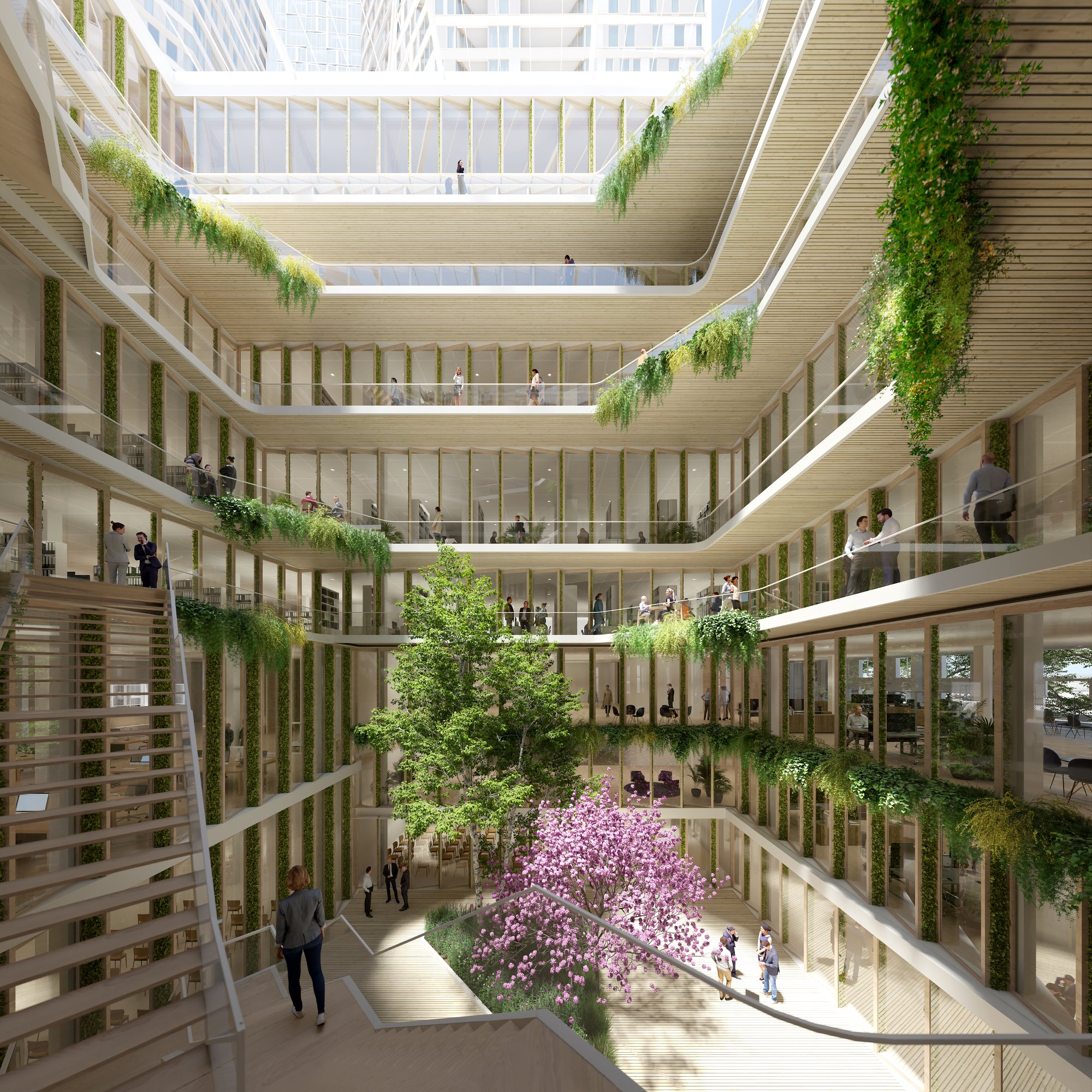
The atrium is defined as an interior outdoor space enclosed by a glass roof. This allows natural light to flood in, reaching the floor below street level.
The floors are organised around the atrium with airy, open corridors and ‘arcades’ behind them. This allows users and visitors, whether in single or multi-tenant use, to move around in an atmosphere of lively social interaction, openness and team spirit.
When visitors enter the foyer through the main entrance, they feel as if they have been transported from the noisy, hectic city to an oasis of calm. This is enhanced by the sensational view of the crown of an evergreen tree planted in the middle of the ground floor, which is about 7 metres lower – this means that the same view of the valley can be enjoyed from the entrance level as from the higher floors.

The existing extension from the 1950s is being replicated in a new form, adapted to the eaves height that characterises the Roßmarkt as a town square. This is accompanied by an increase in lettable space across three new floors. Behind the neo-cubist construction, dominated by glass and wood, hide fascinating, light-flooded rooms.
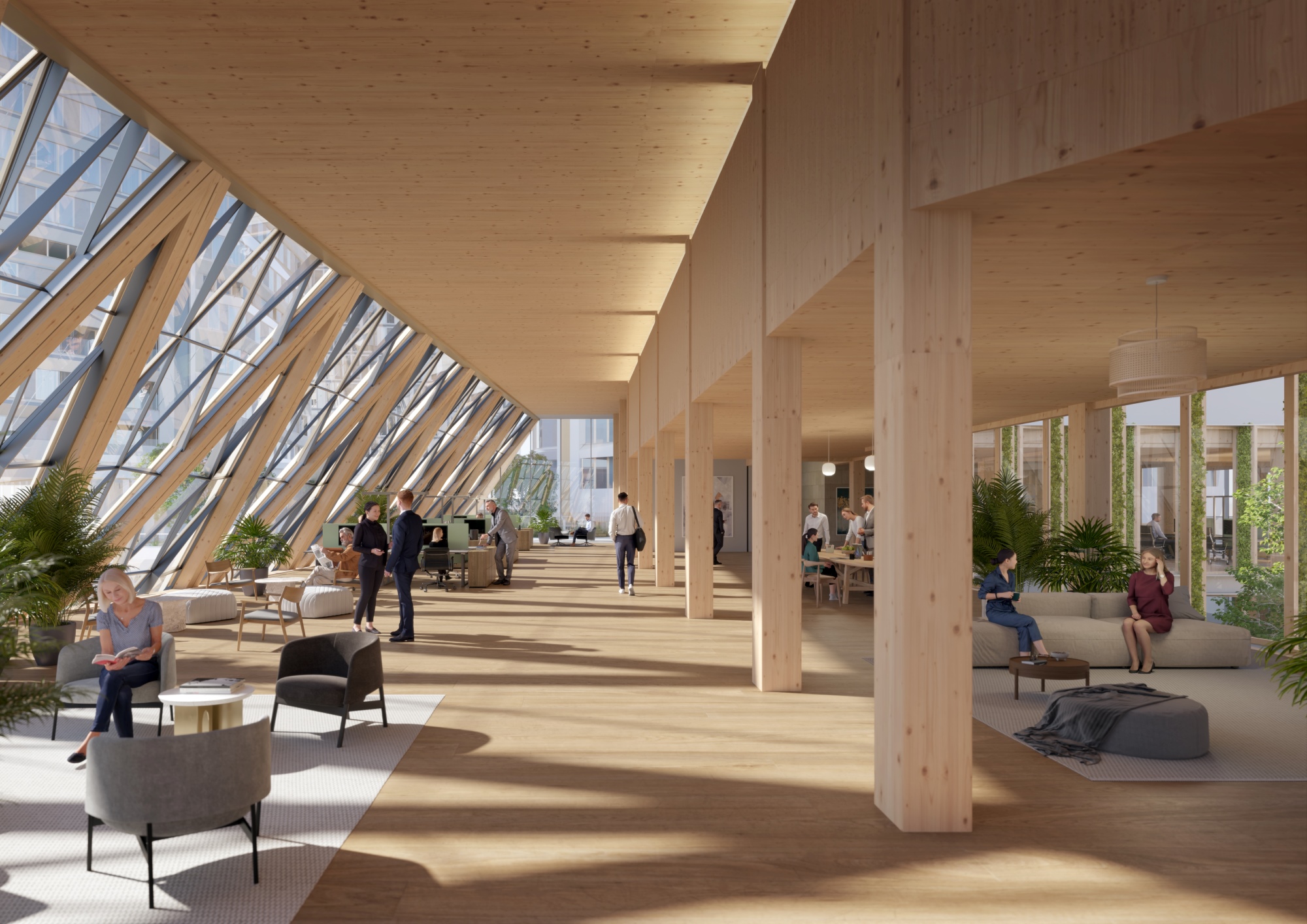
The glass surfaces of the roof structure, which are curved upwards and downwards at the same time, offer unique views down onto the city and up onto the skyscrapers. The unique design of the three new top floors allows the palace to hold its own against the skyscrapers that tower over 100 metres high just a few metres behind it. The unique shape complements the historic façade with a distinctive feature that allows the building to retain its visibility. This can be understood as a symbol of tolerance for the character of the city of Frankfurt, which is typically characterised by the direct juxtaposition of listed old buildings and modern skyscrapers.
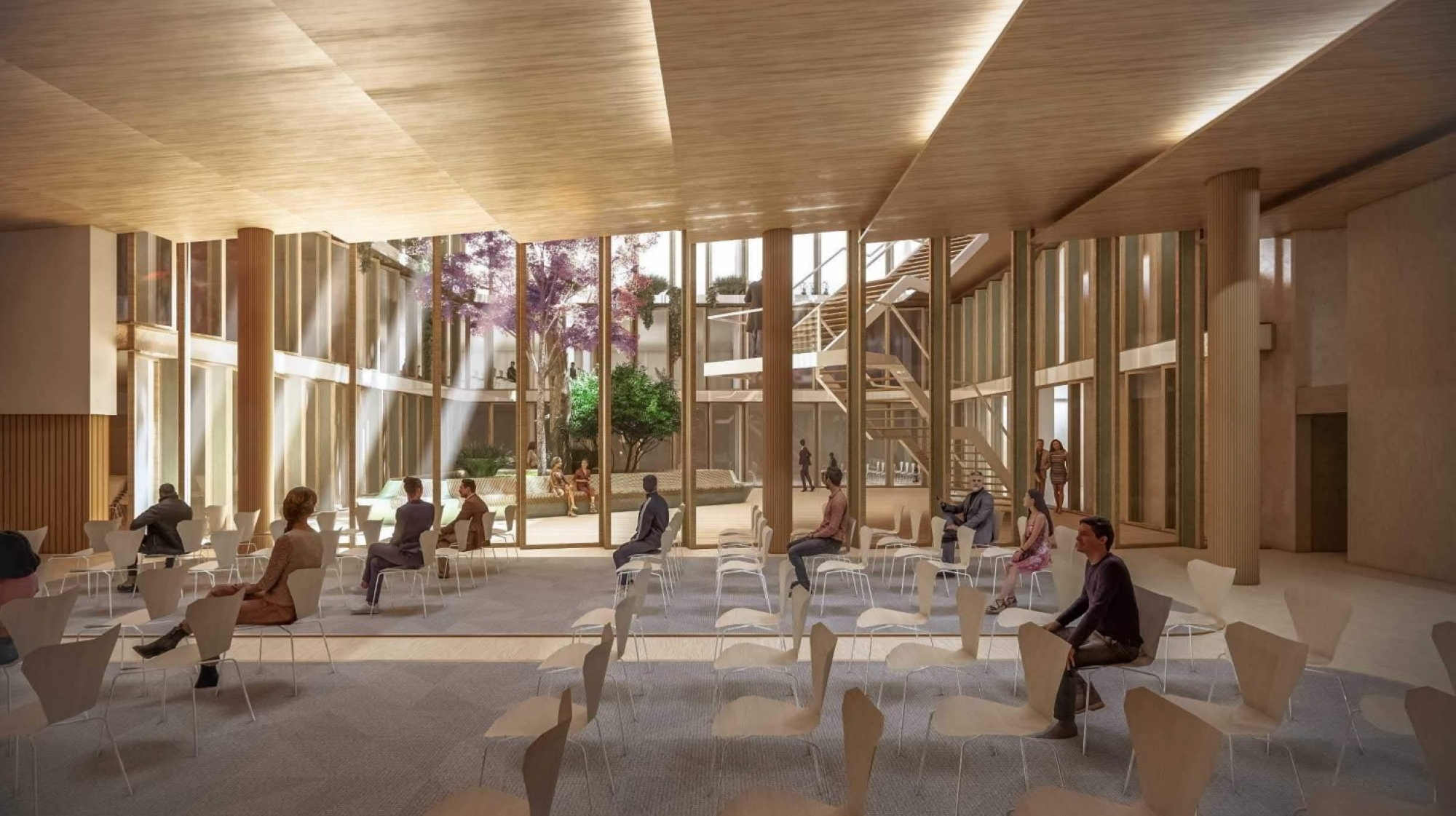
The wooden roof structure visible behind the glass skin is inspired by wooden structures from the Wilhelminian era. The combination of sustainable building materials, a green roof terrace and light openness on all sides promotes a contemporary building culture and an open-minded approach to the historic building stock. Instead of backward-looking conservation, the line is being extended. The design restores history to its position of respect at Roßmarkt, while at the same time transforming it into an aesthetically new life in the 21st century, characterised by less hierarchical, more open forms of collaboration.
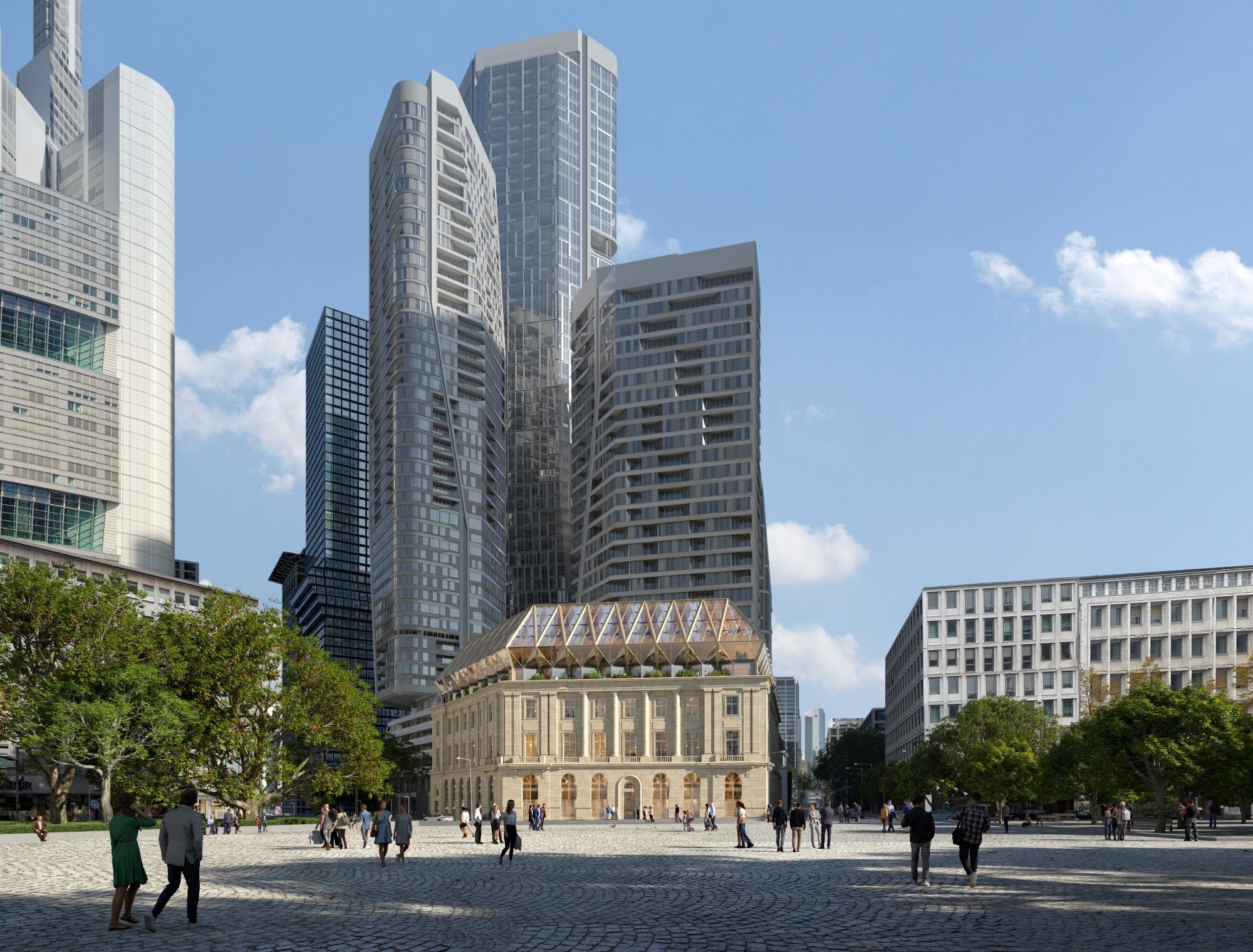
With their architecture reflecting an unbroken belief in progress, without greenery or wood, the new high-rise buildings in the background of the Palais on Roßmarkt seem more like the rearguard of a bygone era, now at home in the densely populated urban structures of Asia or in the representative cultures of rich oil states. In comparison, the rather inconspicuous palace demonstrates its future-oriented nature through its contemporary interpretation of a culture of renovation and its reference to the passers-by and users of the building, i.e. to a city that functions on a human level.
